- Home
- Robin Cook
Invasion
Invasion Read online
“Leave it to doctor-turned-novelist Robin Cook to scare us all to death.”
—Los Angeles Times
INVASION
With his finger on the pulse of the latest medical technology, Robin Cook preys on our deepest fears with uncanny skill. Now, in this most provocative thriller, he explores a sudden outbreak of strange new symptoms that defy diagnosis. The cause is unknown—and unknowable—because it is unlike anything humankind has ever seen…
“Dr. Robin Cook certainly knows how to tell a story.”
—The Detroit News
Praise for
ROBIN COOK
and his bestselling novels
“Straight out of today’s headlines.”
—UPI
“Holds you page after page.”
—Larry King, USA Today
“Shocking and thought-provoking.”
—The Associated Press
“Fast…exciting…spine-tingling.”
—The Denver Post
“Stern and bracing…[a] suspenseful thriller.”
—San Francisco Chronicle
“A real grabber.”
—Los Angeles Times
“A riveting plot, filled with action.”
—The San Diego Union-Tribune
“Gripping.”
—The New York Times Book Review
“A spellbinder…unbearable tension.”
—Houston Chronicle
Titles by Robin Cook
CRISIS
SEIZURE
SHOCK
ABDUCTION
FEVER
VECTOR
TOXIN
INVASION
CHROMOSOME 6
CONTAGION
ACCEPTABLE RISK
FATAL CURE
TERMINAL
BLINDSIGHT
VITAL SIGNS
HARMFUL INTENT
MUTATION
MORTAL FEAR
OUTBREAK
MINDBEND
GODPLAYER
BRAIN
SPHINX
COMA
THE YEAR OF THE INTERN
INVASION
ROBIN COOK
BERKLEY BOOKS, NEW YORK
THE BERKELEY PUBLISHING GROUP
Published by the Penguin Group
Penguin Group (USA) Inc.
375 Hudson Street, New York, New York 10014, USA
Penguin Group (Canada), 90 Eglinton Avenue East, Suite 700, Toronto, Ontario M4P 2Y3, Canada
(a division of Pearson Penguin Canada Inc.)
Penguin Books Ltd., 80 Strand, London WC2R 0RL, England
Penguin Group Ireland, 25 St. Stephen’s Green, Dublin 2, Ireland (a division of Penguin Books Ltd.)
Penguin Group (Australia), 250 Camberwell Road, Camberwell, Victoria 3124, Australia
(a division of Pearson Australia Group Pty. Ltd.)
Penguin Books India Pvt. Ltd., 11 Community Centre, Panchsheel Park, New Delhi—110 017, India
Penguin Group (NZ), 67 Apollo Drive, Rosedale, North Shore 0632, New Zealand
(a division of Pearson New Zealand Ltd.)
Penguin Books (South Africa) (Pty.) Ltd., 24 Sturdee Avenue, Rosebank, Johannesburg 2196,
South Africa
Penguin Books Ltd., Registered Offices: 80 Strand, London WC2R 0RL, England
This is a work of fiction. Names, characters, places, and incidents either are the product of the author’s imagination or are used fictitiously, and any resemblance to actual persons, living or dead, business establishments, events, or locales is entirely coincidental.
INVASION
A Berkley Book / published by arrangement with the author
PRINTING HISTORY
Berkley mass-market edition / April 1997
Berkley premium edition / November 2007
Copyright © 1997 by Robin Cook.
“Introduction” copyright © 2007 by Robin Cook.
Cover art: Eye background by Chad Baker/Ryan McVay; Iris by Joe McNally/Getty Images.
Cover design by Marc Cohen.
All rights reserved.
No part of this book may be reproduced, scanned, or distributed in any printed or electronic form without permission. Please do not participate in or encourage piracy of copyrighted materials in violation of the author’s rights. Purchase only authorized editions.
For information, address: The Berkley Publishing Group,
a division of Penguin Group (USA) Inc.,
375 Hudson Street, New York, New York 10014.
ISBN: 978-1-101-20684-3
BERKLEY®
Berkley Books are published by The Berkley Publishing Group,
a division of Penguin Group (USA) Inc.,
375 Hudson Street, New York, New York 10014.
BERKLEY® is a registered trademark of Penguin Group (USA) Inc.
The “B” design is a trademark belonging to Penguin Group (USA) Inc.
PRINTED IN THE UNITED STATES OF AMERICA
10 9 8 7 6 5 4 3 2 1
If you purchased this book without a cover, you should be aware that this book is stolen property. It was reported as “unsold and destroyed” to the publisher, and neither the author nor the publisher has received any payment for this “stripped book.”
INTRODUCTION
Dear Reader,
Invasion might be my most fun book, at least from the point of view of the writing process. In contrast to my more typical medical mystery/thrillers where I’m constrained by the need for medical/scientific accuracy to bolster my underlying social message, with Invasion I was able to enjoy the entertaining opportunity to indulge my imagination far more than my memory and just let the ideas flow. Of course with my education skewed toward science, the story is based in fact; in particular, what I have learned over the years about viruses, about theories and concepts concerning the nature of consciousness, and about the near statistical inevitability of alien life in this universe or a possible parallel universe. But all that was a mere starting point for a wild, imaginative ride that raises a few social issues like global warming a decade before it became such a hot topic, as well as a scenario that answers a few earthbound mysteries like explaining mass extinctions, specifically that of the dinosaurs at the end of the Cretaceous Period. The story even highlights some frivolous facts like the off-road capabilities of a Range Rover automobile.
As Invasion is such a marked departure from my other twenty-five novels (subsequently I wrote a second science fiction novel, Abduction, since I had had so much fun with Invasion), some people might be curious where the initial impulse to write it came from. Actually I have to thank NBC. It was their movie department’s request for me to come up with a scenario for a two-night science fiction miniseries that was the stimulus. The fact that I had never written any science fiction was not a deterrent; in fact, it was a stimulus. For NBC, I believe they thought they might get something fresh; while for me, I had an inkling that it would turn out to be as much fun as it was.
I believe the preparatory research is always the best part of any writing project, and Invasion was no exception. In fact, it was particularly enjoyable. It required me to go to the movie rental store and essentially rent the whole science fiction section. For reasons I cannot entirely explain, I had watched very few science fiction movies. I suppose one reason was that when I was a surgical resident I had had a bad experience concerning science fiction. While on secondary call (meaning I was permitted to be out of the hospital but close by), and after making sure the ER was peaceful, I had gone to the movie theater less than a block away to see Star Wars. Unfortunately I was called for an emergency, but for almost a half hour I thought my beeper was R2D2!
After watching a ton of science fiction movies both from the silver screen and the little screen, I began to
see some trends. Being a rebel of sorts I decided to buck those trends. First of all, my spaceships were not so enormous that it took the entire time of the credits to go by to scan the exterior. In Invasion they are only a few inches in diameter! My aliens weren’t huge or ugly or slimy but rather they cannot be seen at all! And finally my aliens haven’t come to kill people and destroy the world. Instead they want to inhabit people like viruses inhabit cells, and their goal is to save the world!
In order to write this letter I felt it was incumbent on me to reread my own book, always a scary proposition after a few years have gone by. I have to confess I was a little worried whether I would find it embarrassing like some of my journals from middle school. Instead I found it as much fun as when I wrote it. I even belly laughed a few times and reconnected with my struggle to understand consciousness. I certainly hope others enjoy it as well.
Respectfully,
Robin Cook
Table of Contents
Prologue
1
2
3
4
5
6
7
8
9
10
11
12
13
14
15
16
17
18
19
20
About the Author
PROLOGUE
IN THE FRIGID VASTNESS OF INTERSTELLAR SPACE A PINPOINT of matter—antimatter fluctuated from the void, creating an intense flash of electromagnetic radiation. To the human retina, the phenomena would have appeared as the sudden emergence and expansion of a blip of colors representing the full spectrum of visual light. Of course, the gamma rays, the X rays, and even the infrared and radio waves would not have been visible to a human’s limited vision.
Simultaneous with the burst of colors, the human witness would have seen the emergence of an astronomical number of atoms in the form of a rotating, black disciform concretion. The phenomenon would have appeared like a video run in reverse of the object falling into a crystalline pool of fluid whose ripples were the warping of space and time.
Still traveling at nearly the speed of light, the huge number of coalesced atoms rocketed into the distant reaches of the solar system, streaking past the orbits of the bloated outer gaseous planets of Neptune, Uranus, Saturn, and Jupiter. By the time the concretion reached the orbit of Mars its rotation and velocity had slowed significantly.
The object could now be seen for what it was: an intergalactic spaceship whose gleaming outer surface looked like highly polished onyx. The only deformity of its disciform shape was a series of bulges along the top surface of its outer edge. The contours of each of these bulges mirrored the silhouette of the massive mother ship. There were no other distortions of the outer skin: no portholes or exhaust vents or antennae. There weren’t even any structural seams.
Streaking into the outer fringes of the earth’s atmosphere, the outside temperature of the space ship soared. A burning tail appeared to light up the night sky behind the ship as the heat-excited atmospheric atoms gave off photons in protest.
The ship continued to slow both in terms of rotation and velocity. Far below, the twinkling lights of an unsuspecting city appeared. The preprogrammed ship ignored the lights; it was by luck that the impact occurred in a rocky, boulder-strewn, arid landscape. Despite the relatively slow speed it was more of a controlled crash than a landing, sending rock, sand, and dust billowing into the air. When the craft finally came to a stop, it was half buried in earth. Debris sent skyward in the impact rained down on its polished topside.
After the surface temperature had fallen below two hundred degrees centigrade, a vertical slitlike opening appeared along the ship’s outer edge. It was not like a mechanical door. It was as if the molecules themselves worked in concert to create the penetration of the ship’s seamless exterior.
Vapor escaped through the slit, evidence that the interior of the craft was deep-space frigid. Inside, banks of computers busily ran automatic sequences. Samples of the earth’s atmosphere and soil were hauled inside to be analyzed. These automated procedures functioned as planned, including the isolation of prokaryotic life forms (bacteria) from the dirt. Analysis of all the samples, including the DNA contained therein, confirmed that the proper destination had been reached. The arming sequence was then initiated. Meanwhile, an antenna was extended up into the night sky to prepare for quasar frequency transmission to announce that Magnum had arrived.
1
10:15 P.M.
“HEY, HELLO!” CANDEE TAYLOR SAID AS SHE TAPPED Jonathan Sellers on the shoulder. At the moment Jonathan was busily kissing her neck. “Earth to Jonathan, come in please!” Candee added while she began rapping on Jonathan’s head with her knuckles.
Both Candee and Jonathan were seventeen and juniors at Anna C. Scott High School. Jonathan had recently gotten his driver’s license, and although he was not yet permitted to use the family car, he’d been able to borrow Tim Appleton’s VW. Despite it being a school night, Candee and Jonathan had managed to sneak out and drive up to the bluff overlooking the city. Each had eagerly anticipated this first visit to the school’s favorite “lover’s lane.” To help set the mood, as if they’d needed any help, the radio was tuned to KNGA, home of nonstop top forty hits.
“What’s the matter?” Jonathan questioned while probing the tender spot on the top of his head. Candee had had to hit him pretty hard to divert his attention. Jonathan was tall for his age and thin. His adolescent growth spurt had been all vertical, much to his basketball coach’s delight.
“I wanted you to see the shooting star.” As a gymnast, Candee was significantly more physically developed than Jonathan. Her body was the source of the admiration of the boys and the envy of the girls. She could have dated almost anyone, but she chose Jonathan because of a combination of his cuddly good looks and his interest in and abilities with computers. Computers happened to be one of her interests as well.
“So what’s the big deal about a shooting star?” Jonathan whined. He glanced up at the stars but quickly returned his gaze to Candee. He couldn’t be sure of it, but he thought that one of the buttons of her blouse that had been buttoned when they’d arrived was now mysteriously unbuttoned.
“It went all the way across the sky,” Candee said. She traced her index finger across the windshield for emphasis. “It was awesome!”
In the half-light of the car’s interior, Jonathan could just make out the imperceptible rise and fall of Candee’s breasts with her breathing. He found that more awesome than any stars. He was about to lean over and try to kiss her when the radio seemingly self-destructed.
First the volume jumped to an ear-splitting level, followed instantly by a loud popping and hissing noise. Sparks leaped out of the dashboard and smoke billowed up.
“Shit!” Jonathan and Candee screeched in unison as they reflexively tried to push themselves away from the sparking receiver. Both leaped from the car. From the safety of the exterior they peered back inside, half expecting to see flames. Instead the sparking stopped as abruptly as it had started. Straightening up, they eyed each other across the top of the car.
“What the hell am I going to tell Tim?” Jonathan moaned.
“Look at the antenna!” Candee said.
Even in the darkness Jonathan could see that its tip was blackened.
Candee reached out and touched it. “Ouch!” she exclaimed. “It’s hot.”
Hearing a babble of voices, Jonathan and Candee looked around them. Other kids had gotten out of their cars as well. A pall of acrid smoke hung over the scene. Every radio that had been on, whether playing rap music, rock, or classical, had blown its fuse. At least that’s what everybody was saying.
10:15 P.M.
DR. SHEILA MILLER LIVED IN ONE OF THE CITY’S FEW RESIDENTIAL high-rises. She liked the view, the breezes from the desert, and the proximity to the University Medical Cen
ter. Of the three, the last was the most important.
At age thirty-five, she felt as if she’d been through two lives. She married early in college to a fellow premed student. They’d had so much in common. Both thought that medicine was to be their consuming interest and that they should share the dream. Unfortunately, reality had been brutally unromantic because of their arduous schedules. Still, their relationship might have survived if George hadn’t had the irritating idea that his career as a surgeon was more valuable than Sheila’s path, first in internal medicine and then in emergency medicine. As far as domestic responsibility was concerned, it had all fallen on her shoulders.
George’s undiscussed decision to accept a two-year fellowship in New York had been the straw that broke the camel’s back. The idea that George expected her to follow him to New York when she’d recently accepted the position of head of the University Medical Center emergency department showed Sheila how mismatched they were. What romance had once been between them had long since evaporated, so with little argument and no passion they divided up their collection of CDs and back issues of medical journals and went their separate ways. As far as Sheila was concerned, the only legacy was a mild bitterness about assumed male prerogatives.
On that particular night like most nights Sheila was busy reading her unending pile of medical journals. At the same time she was taping a TV presentation of an old movie classic with the idea of watching it over the weekend. Consequently her apartment was quiet save for the occasional tinkle of her wind chimes on her patio.
Sheila did not see the shooting star that Candee saw, but at the same moment Candee and Jonathan were startled by the destruction of Tim’s car radio, Sheila was equally shocked by a somewhat similar catastrophe with her VCR. Suddenly it began to spark and whir as if it were about to launch into orbit.
Startled from the depths of concentration, Sheila still had the presence of mind to yank out the power cord. Unfortunately that maneuver had little effect. It wasn’t until she disengaged the cable line that the machine fell silent although it continued to smoke. Gingerly Sheila felt the top of the console. It was warm to the touch but certainly not about to catch fire.

 Shock
Shock Mutation
Mutation Chromosome 6
Chromosome 6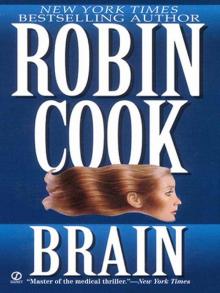 Brain
Brain Intervention
Intervention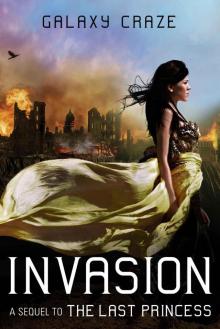 Invasion
Invasion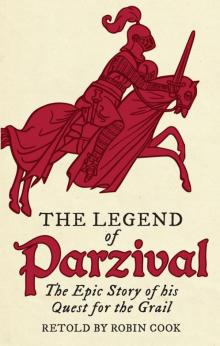 The Legend of Parzival: The Epic Story of His Quest for the Grail
The Legend of Parzival: The Epic Story of His Quest for the Grail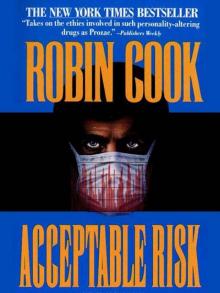 Acceptable Risk
Acceptable Risk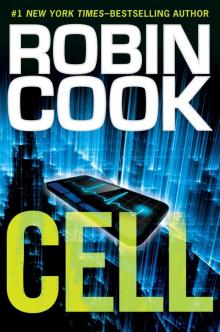 Cell
Cell Fever
Fever Death Benefit
Death Benefit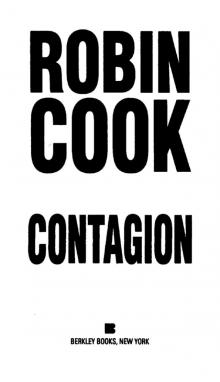 Contagion
Contagion Mindbend
Mindbend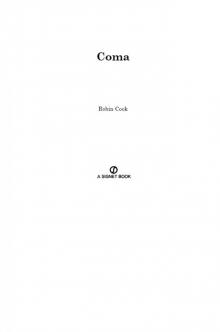 Coma
Coma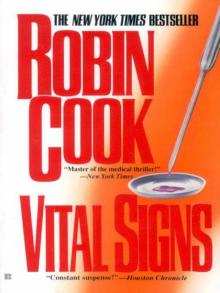 Vital Signs
Vital Signs Harmful Intent
Harmful Intent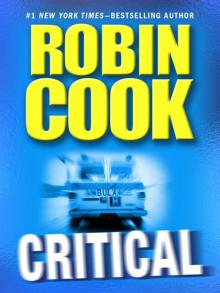 Critical
Critical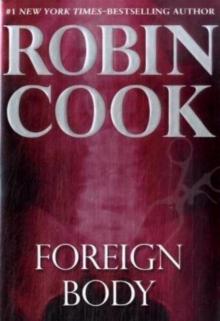 Foreign Body
Foreign Body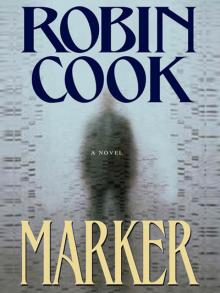 Marker
Marker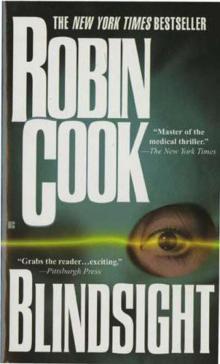 Blindsight
Blindsight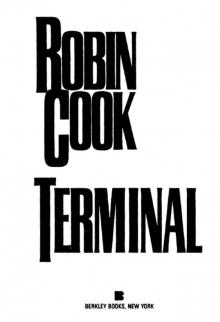 Terminal
Terminal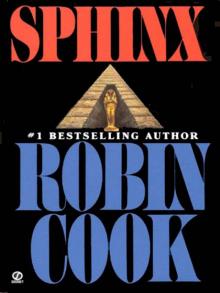 Sphinx
Sphinx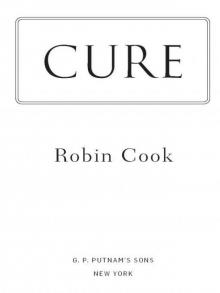 Fatal Cure
Fatal Cure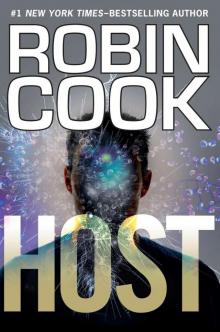 Host
Host Charlatans
Charlatans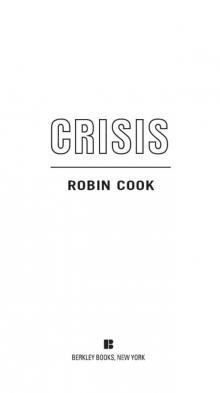 Crisis
Crisis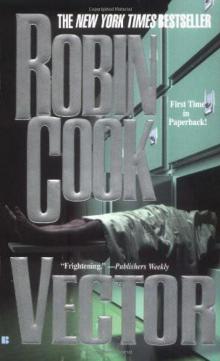 Vector
Vector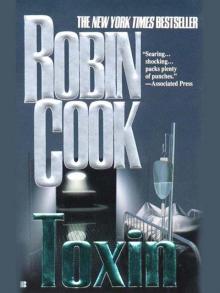 Toxin
Toxin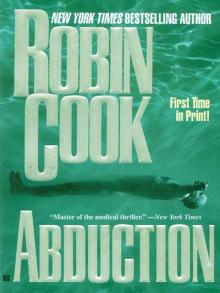 Abduction
Abduction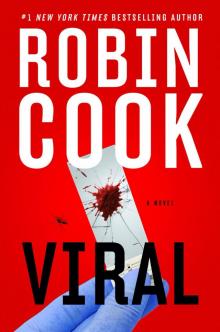 Viral
Viral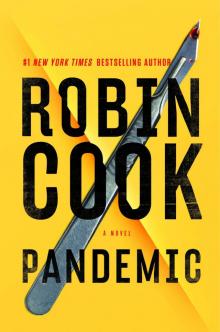 Pandemic
Pandemic Outbreak
Outbreak Vector js&lm-4
Vector js&lm-4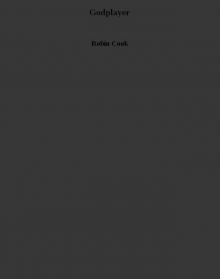 Godplayer
Godplayer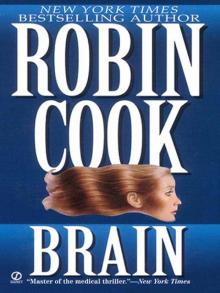 A Brain
A Brain Year of the Intern
Year of the Intern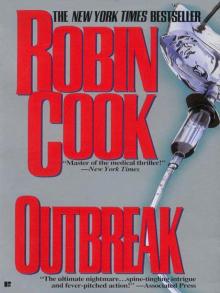 Outbreak dmb-1
Outbreak dmb-1 Cure
Cure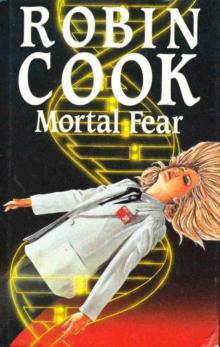 Mortal Fear
Mortal Fear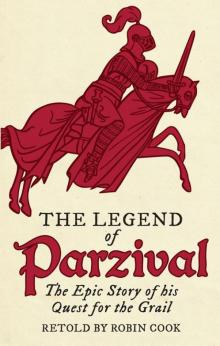 The Legend of Parzival
The Legend of Parzival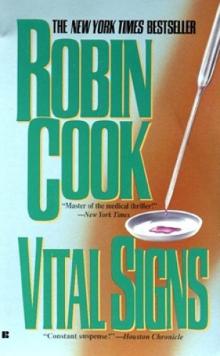 Vital Signs dmb-2
Vital Signs dmb-2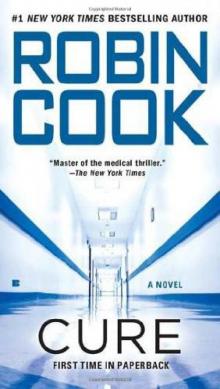 Cure (2010) sam-10
Cure (2010) sam-10 Blindsight sam-1
Blindsight sam-1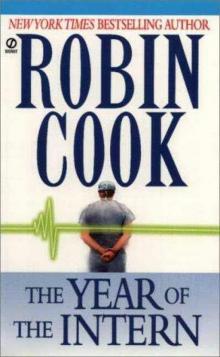 The Year of the Intern
The Year of the Intern Intervention sam-9
Intervention sam-9 Foreign Body sam-8
Foreign Body sam-8